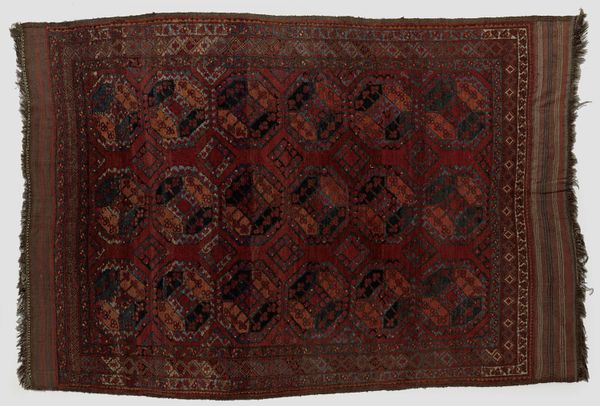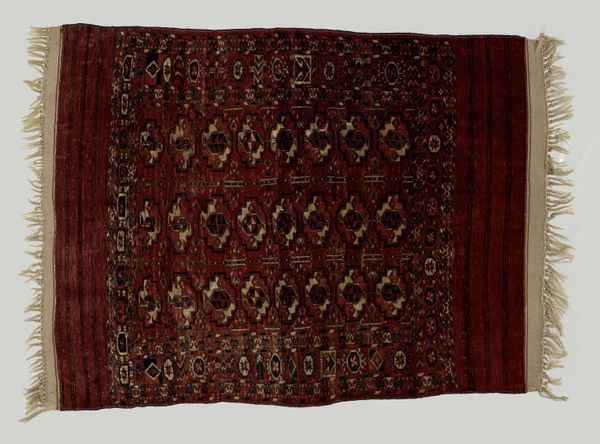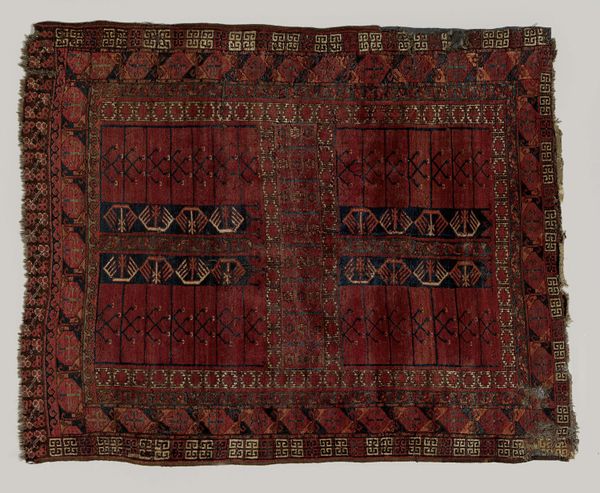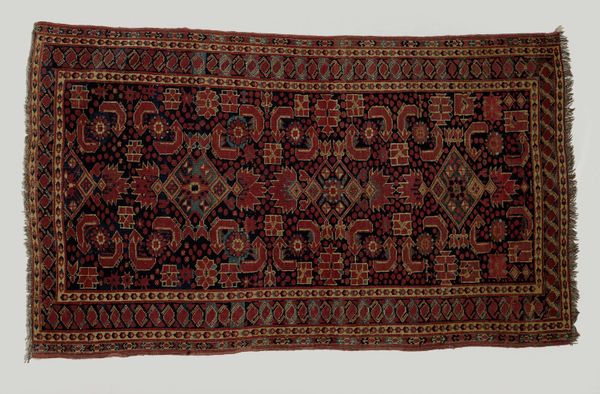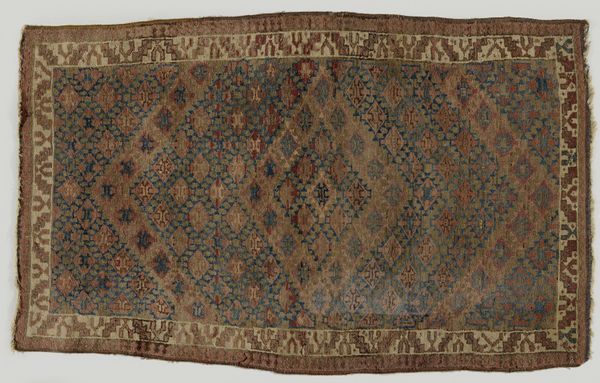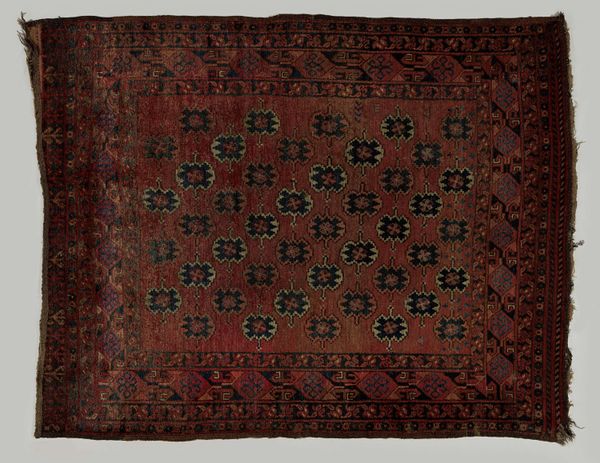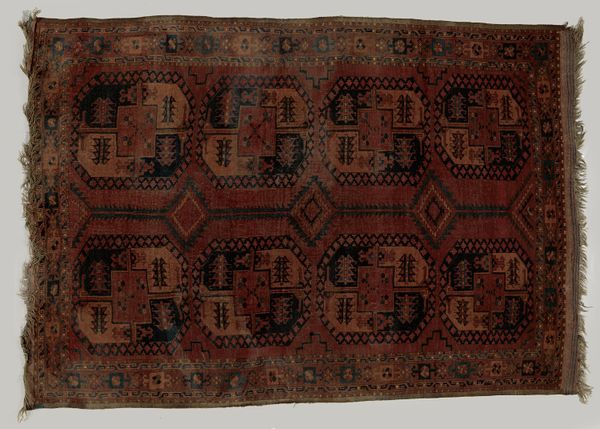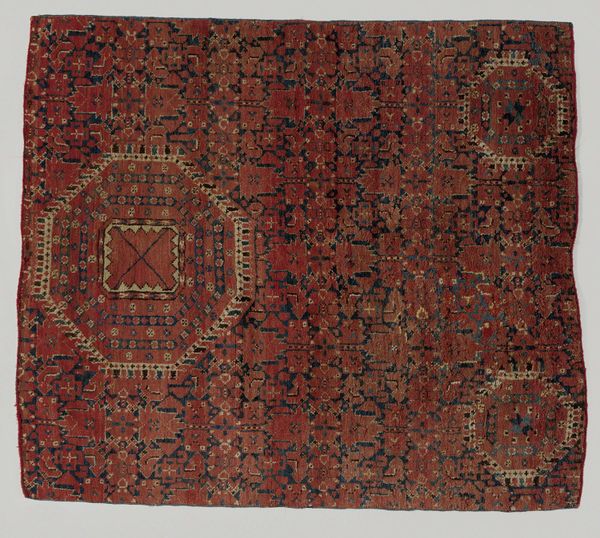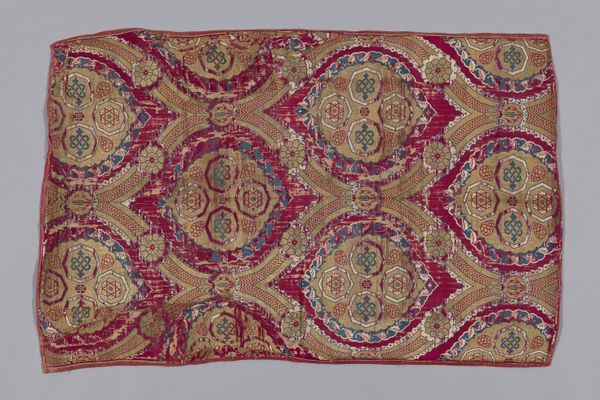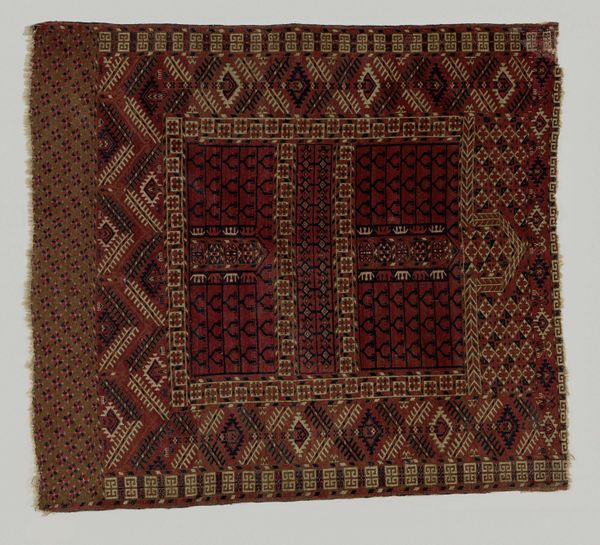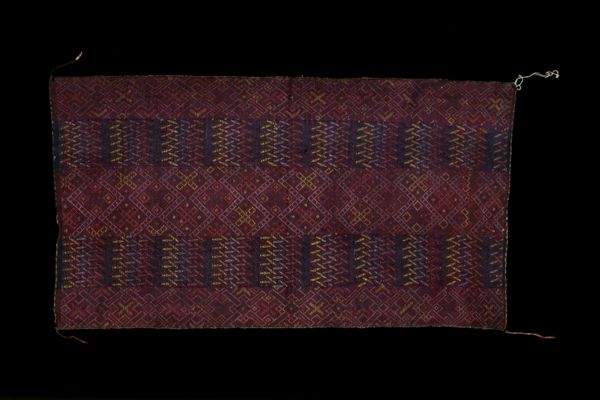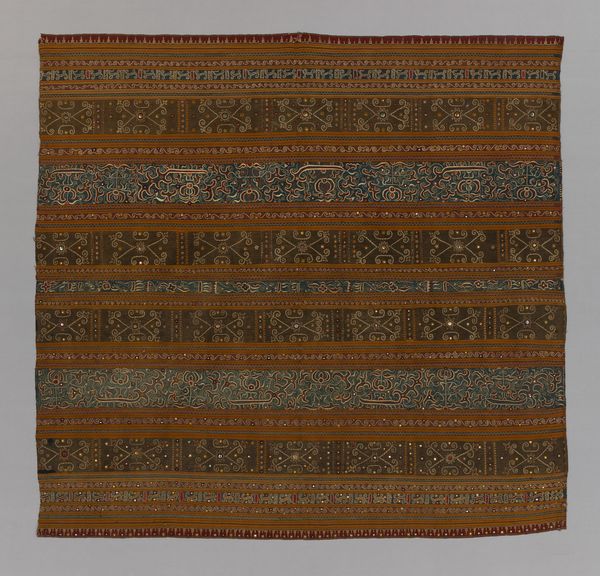
#
natural stone pattern
#
tile art
#
carved into stone
#
repetition of pattern
#
wooden texture
#
pattern repetition
#
texture
#
imprinted textile
#
layered pattern
#
organic texture
Dimensions: height 247 cm, width 180 cm
Copyright: Rijks Museum: Open Domain
This "Oosters tapijt" or Eastern carpet was made by the Kizil-Ayak people, a Central Asian Turkoman group. It represents more than just an object of decor, it embodies the history and cultural identity of its makers. The Kizil-Ayak are known for their distinctive weaving techniques and patterns, which often incorporate deep reds and geometric designs. The motifs seen here are not merely decorative; they often carry symbolic meanings related to tribal affiliations, beliefs, and social status. The process of creating such a carpet is a communal endeavor, with women typically responsible for the weaving. Through each knot and color choice, they embed their personal stories and the collective memory of their community. Consider how this carpet transcends its utilitarian purpose to become a powerful expression of cultural resilience and identity. It serves as a tangible link to a heritage that resists erasure and celebrates the enduring spirit of the Kizil-Ayak people.
Comments
No comments
Be the first to comment and join the conversation on the ultimate creative platform.
